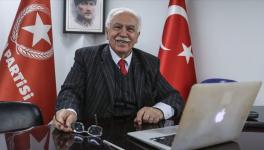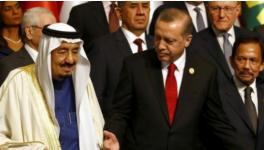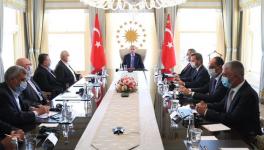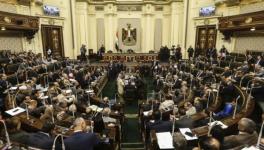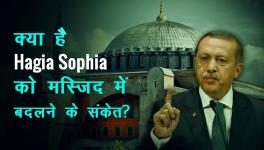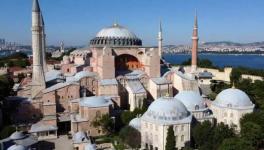How Turkey’s Hagia Sophia Decision Bolsters Hardline Narratives
Image for representational use only.
Istanbul’s Hagia Sophia museum has been turned into a mosque by none other than the Turkish strongman, President Recep Tayyip Erdogan. Despite raging criticism of the court order all across the world, he has declared the museum, which was used as a mosque for more than 500 years, as a place of Muslim worship after an 85-year gap.
Over the last two decades, Erdogan’s Islamist-leaning party has repeatedly demanded the conversion of the museum into a mosque. Merely two years ago, while visiting Hagia Sophia, he had recited a verse from the Qur’an, the Muslims’ holy book.
The imposing Hagia Sophia was built some 1,500 years ago as an Orthodox Christian cathedral on the order of the Byzantine emperor, Justinian the First. It was converted into a mosque after the Ottoman emperor, Mehmet, conquered Constantinople, now Istanbul, in 1453. Kemal Ataturk, the first secular ruler of the once mighty Ottoman Caliphate decided in 1934 to make it a museum by cabinet fiat in 1935.
The decision has invited derision and scorn not just from Christian outfits of varied denominations, and from governments, but also from many Muslims throughout the world. It is easy for Erdogan to brush off the criticism from Christians by citing multiple mosques that have been turned into churches, including the magnificent Cordoba and Granada mosques in Spain, and many others in Europe. Turkish strongman recently thundered: “Those who do not take a step against Islamophobia in their own countries...attack Turkey’s will to use its sovereign rights.” But it will not be as easy for him to brush off criticism from Muslims for what he has decreed.
Many Muslims are of the view that turning a church into a mosque was completely un-Islamic and that there is a clear precedent to the contrary in the second Rashidun Caliphate. Caliph Umar, after the conquest of Jerusalem, refused to offer prayers at the Church of the Holy Sepulchre on the ground that if he did so, his followers would convert it into a mosque.
Historians say that in around 637 AD, when Muslims had conquered most areas of present-day Palestine, and as they approached Jerusalem, Patriarch Sophronius, the in-charge of Jerusalem and a representative of the Byzantine government there, had refused to surrender despite the formidable Muslim armies overrunning the holy city. His condition for surrender was that he would do so only before Umar. It is then said that Sophronius was impressed and awed by the simplicity of Umar, and took him around the city, including to the Church of the Holy Sepulchre located in the Christian quarters of the old city of Jerusalem. At prayer time, when Sophronius invited Umar to pray inside, he refused saying he did not want to give fellow Muslims an excuse to convert it into a mosque. The Caliph’s decision shows how for more than 1,400 years, Muslims have respected the religious freedom of the followers of other faiths. The Church of the Holy Sepulchre contains the two holiest sites in Christianity, the site where Jesus is said to have been crucified and his empty tomb.
Tasleem Rahmani, president of the Muslim Political Council of India tells me that converting Hagia Sophia into a mosque is a step fraught with dangers for minorities across the world. “It is bound to paint a bad image of Muslims worldwide at this juncture. While the world is promoting Islamophobia with various ruses, this will be a big addition...We request the Turkish government to take some remedial steps to preserve it as it is and show the world their leadership skills as a tolerant Islamic ideological governance in the days of fascists spreading hatred against Islam,” he says.
Zartab Haider Jafri, a community activist, condemns the move saying that Erdogan has lost a golden opportunity to present the tolerant image of Islam. “Turning Hagia Sophia into a Mosque is not a welcome step. It sets up a dangerous precedent of giving in to populist demands, satiating the ego of the majority and hurting the sentiments of minorities,” he says. Built in 537 AD, this church is regarded as one of the marvels of the world. “It should either be given back to the Christians to practice their faith or the status quo of it being a museum should be maintained,” he says.
Jafri also feels that usurping religious places by force or deceit is a dishonest act and certainly not the way of those who claim to stand on principles of love, humanity, peace and equality. “Power does not lie in chest-thumping and serving the majority. It lies in giving the marginalised their rightful inheritance and safeguarding their interests from majoritarian biases and prejudice,” he says.
Mohammad Ghazali Khan, a London-based scholar, tells me that he is disappointed by Turkey’s arbitrary move. He is also “amazed” at the expressions of joy among some Indian Muslims over the ruling. “It is completely absurd to try to correct historic wrongs. The first mistake was to convert a church into a mosque. The second and equally big mistake was to turn an existing mosque into a museum and now the Turkish court has committed a third mistake by converting a museum into a mosque,” he says. “If all the rulings of courts were right, then why did we feel disappointed over the court ruling regarding the Babri Masjid,” Khan says.
Yet a small section of mostly hardline Indian Muslims are justifying Turkey’s ruling on the specious logic that the Hagia Sophia was bought by the Muslims. The former Amir of the Jamaat-e-Islami Hind Maulana Jalaluddin Umari said as much in a press release: “Some people have said that this step is against the spirit and teaching of Islam. However, the details coming in the media suggest that this was not the case of forcibly taking over a church and converting it into a mosque. Sultan Muhammad Fateh had actually bought it from Christians after conquering the town...There is no element of oppression and coercion in the reconversion of Hagia Sophia”.
The octogenarian maulana is not the only one making such remarks, forgetting that the very first prayer at the mosque was offered merely a few hours after Muslims had conquered the town, which was known as Constantinople at the time.
Hagia Sophia is no ordinary church. Richard Winston writes in his book, Hagia Sophia: A History, “On the day of this historic inauguration, Justinian emerged in state from his palace in a four-horse chariot. He sacrificed 1,000 oxen, 600 sheep, 600 stags, and some 10,000 birds before giving 30,000 bushels of meals to the poor and needy. Accompanied by the patriarch, he then proceeded to the church. Entering its royal gates, the emperor released the patriarch’s hand, which he had been holding, and hastened on alone...”
Robert S Nelson, narrates the story of the monument being changed over the last two millennia in the introduction to his book, Hagia Sophia, 1850-1950: Holy Wisdom Modern Monument, that the “Hagia Sophia... presides majestically atop a plateau that commands the straits separating Europe and Asia. Often simply called the Great church in the Middle Ages, it is located near the acropolis of the ancient Greek city of Byzantium and at the political and ceremonial centre of Byzantine Constantinople and Ottoman Istanbul. Hagia Sophia has had a complex history. Completed as the Cathedral of Constantinople by Emperor Justinian in 537, converted into the Mosque of Aya Sofya by Sultan Mehmet in 1453, decreed a museum in 1934 at the instigation of Mustafa Kamal, the president of the Republic of Turkey, it has been used, abused, damaged, restored, denigrated, celebrated and enjoyed.”
Turkey’s turning of Hagia Sophia into a mosque comes at a completely inopportune juncture. It jeopardizes the semblance of communal harmony that still survives in a world where Islamophobia is now almost an unconscious bias. This is why it is wrong and self-destructive. A more considerate approach from the Turkish court and authorities would have sent the right signals, not just to the Christian world, but all over the world, at a time when it is needed most. Alas, such a signal never materialised.
The author is a writer and columnist. The views are personal.
Get the latest reports & analysis with people's perspective on Protests, movements & deep analytical videos, discussions of the current affairs in your Telegram app. Subscribe to NewsClick's Telegram channel & get Real-Time updates on stories, as they get published on our website.









